#govard bidloo
Photo
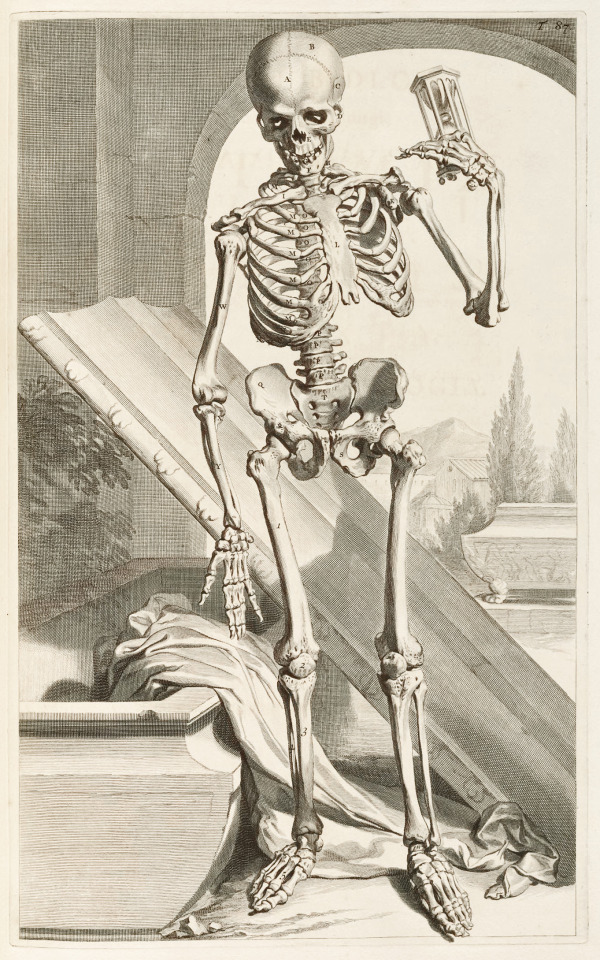
Christoffel van Sichem (1581-1658), ''Godefridi Bidloo, Medicinae Doctoris & Chirurgi, Anatomia Hvmani Corporis'' by Govard Bidloo, 1685
Source
#christoffel van sichem#dutch artists#govard bidloo#anatomia humani corporis#skeletons#medical texts#human anatomy#anatomie humaine
1K notes
·
View notes
Text




Ontleding des menschelyken lichaams
Uniform Title(s): Anatomia humani corporis
Author(s): Bidloo, Govard, 1649-1713
source:(X)
9 notes
·
View notes
Text



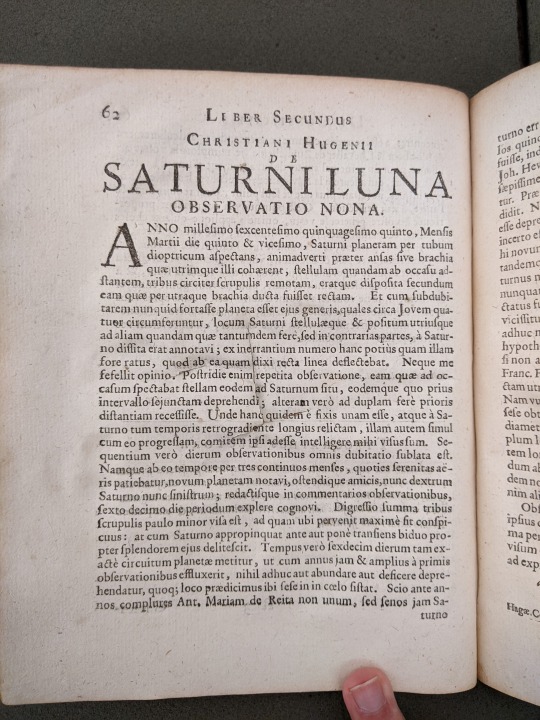
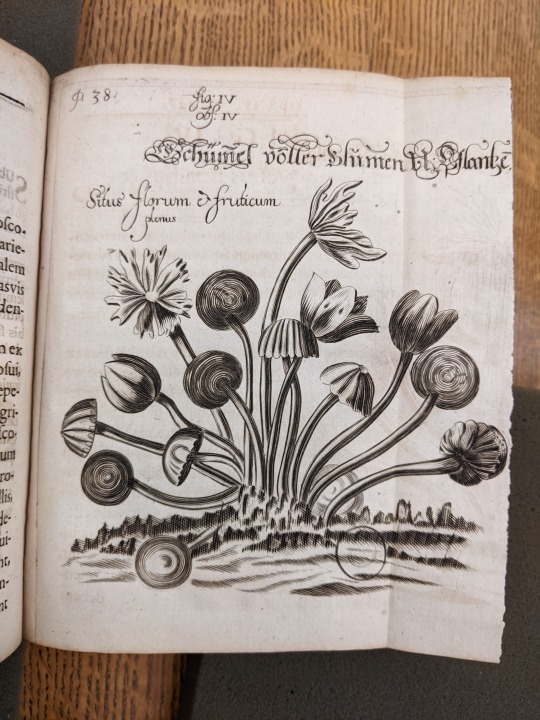

We have an exciting new acquisition to feature this Friday! Last week, a generous donor gave the Libraries a copy of Pierre Borel's De Vero Telescopii Inventore (1655). This work is a history of the invention of the telescope from antiquity to the time of writing. At the time, both Hans Lippershey and Zacharias Janssen claimed to be the inventor of the telescope, and Pierre Borel found Janssen's claims to be more convincing. Present-day historians have tended to recognize Lippershey instead, but they do give Janssen credit for inventing the compound microscope.
Borel also printed a letter from Christiaan Huygens' in which he details his observations of Titan, one of the moons of Saturn. This letter also contained Huygens' identification of the rings of Saturn in an anagram - a sly way to sneak the idea into print without giving it away before Huygens' own publication of Systema Saturnium in 1659.
This volume is bound with several others: Johann Franz Griendel's Micrographia nova (1687); Anton van Leeuwenhoek's Ontledingen en ontdekkingen van levende dierkens in de teel-deelen van verscheide dieren, vogelen en visschen (1696); and Govard Bidloo's Brief aan Antony van Leeuwenhoek (1698).
Many thanks to donor Rick Hardin for this newest addition to the collection.
De vero telescopii inventore : cum brevi omnium conspiciliorum historia : ubi de eorum confectione, ac usu, seu de effectibus agitur, novaque quaedam circa ea proponuntur : accessit etiam centuria observationum microcospicarum / Authore Petro Borello, regis Christianissimi consiliario, & medico ordinario. VAULT QB88 .B72 1655
#history of science#histsci#astronomy#history of astronomy#newacq#bookhistory#rare books#mizzou#special collections#university of missouri#libraries#kelli h
33 notes
·
View notes
Note
Do you have any theories as to the cause(s) of Mary and Anne's obstetrical problems?
In fact I do, but II would like to preface my reply with several huge caveats:
This is all mere speculation based on historical information.
I'm not a doctor, so I have no authority to speak on medical issues of any kind.
Even a doctor could not form a concrete diagnosis based on what little historical circumstantial evidence there is; they would have to examine the person in question for that, which is naturally not really possible if we're talking about someone who died in 1694.
With that out of the way, here's what I think: It may not have been the same medical issue for both sisters. While Mary struggled to conceive, Anne's children often were stillbirths or died very shortly after birth. I know a lot more about Mary, though, than Anne.
Mary was married extremely young; she was 15, and just a few months shy of her 16th birthday when she was sure that she was pregnant. Now, the body of a person this young is absolutely not meant to be pregnant, and I wonder if that may have been a factor triggering the first miscarriage, with the rough carriage ride to Breda, where she wanted to meet her husband while the latter was on campaign, also factoring in.
As far as was reported, the miscarriage proved pretty hazardous for Mary's health, keeping her abed for weeks. To me, it seems likely that she may have sustained internal injuries that may have prevented her from ever successfully carrying a child to term.
There is an interesting detail that causes me to suspect that Mary and her physicians had a similar suspicion: In the late 1680s, Justine Siegmund was a guest at the court of the Hague.
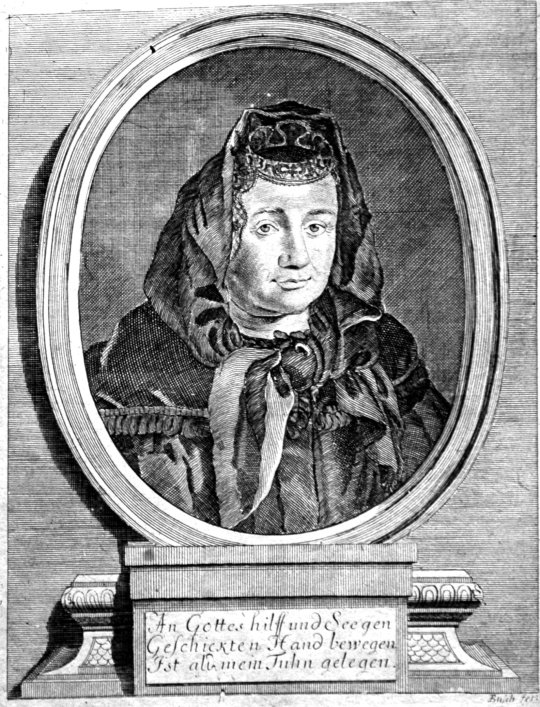
Justine Siegmund, ca. 1690.
Justine Siegmund was the officially appointed midwife to the electoral court of Brandenburg, and had delivered a great many children of the German royalty and nobility, while still attending other births in the Berlin area.
Siegmund had initially started to become interested in gynecology and obstetrics after she had suffered a uterine prolapse at the age of 20. The midwives her husband had consulted had been unhelpful and diagnosed a false pregnancy (a diagnosis that was uttered in connection to Mary's last pregnancy, too), causing Siegmund to feel not taken seriously, and suffering a lot of pain as a result of not receiving adequate medical care.
Following her own traumatic experience, Siegmund trained to become a midwife herself in order to improve conditions for other women.
She rose to become the city midwife of Legnica in 1670, and in time was appointed to the court of Brandenburg by Friedrich Wilhelm "The Great Elector" in 1683.
Said elector had been married to Louise Henriette of Orange for his first marriage, who had been William's aunt. The elector had also played a role in William's guardianship during his minority, and of the Brandenburg children, William had reportedly been pparticularly close with the oldest, Karl Emil, who died in his late teens. Friedrich, the next eldest brother, would become the first King in Prussia and became elector in 1688, the same year his father died and Justine Siegmund may have arrived at the Dutch court.
Given her prominent position as court midwife, it looks as if Friedrich sent Wiliam and Mary Justine Siegmund for a consultation. Their struggle to conceive was discussed openly enough among their family; Sophie von Hannover, for instance, also weighed in on it in letters.
For Justine Siegmund, the trip to The Hague must have been a professional success; not only did it prove that the electoral court held her in high esteem, the Netherlands, and especially the medical faculty at Leiden, were the ideal place for a medical professional to meet new people and exchange ideas. Among her contacts, and contributing anatomical engravings for the handbook for midwives Siegmund was writing, was Govard Bidloo, who in 1695 would be appointed to the unenviable post of personal physician to William III.
What made her so special among other midwives of her age was not just her position at court: while it was customary for midwives to be women who had born a child of their own, Siegmund never had any children.
She also, and this is where things get quite interesting, performed medical interventions that went beyond monitoring pregnancies and assisting during birth. Indeed, what first caught the eye of male medical doctors of the time was not a particularly difficult birth she helped to bring to a successful conclusion, it was the removal of the Duchess of Legnica's cervical tumor.
So while her official title was that of a midwife, Siegmund's expertise was also in the field of gynecological surgery.
To me, it would make perfect sense that Siegmund was sent from Brandenburg to the Netherlands in order to examine Mary, and, if possible, perform an operation on her to 'fix' whatever prevented her from having children.
In time, Siegmund returned to Brandenburg. What she may have discussed with Mary and William remains mere conjecture, but I would consider it likely that she informed them of the impossibility of another pregnancy due to the injuries Mary had sustained a decade earlier.
So, all things considered, I think that Mary was a victim of marriage politics; although it is mere conjecture, it seems likely that, had she been married later, and thus had started to try for a baby at a somewhat more advanced age (say, in her early 20s), the chances for a successful pregnancy, birth and subsequently healthy mother and infant would have been drastically increased.
As for Anne, I reach the limitations of my deducting based on historical circumstantial evidence. I simply have not come across enough sources pertaining to Anne's reproductive health yet, and don't have the medical background knowledge to speculate with reasonable certanty on possible conditions.
Perhaps her lifestyle (which was an inescapable cycle of never ending pregnancies, being therefore prescribed to rest and good food being one of the few things she could indulge in at the time) may have contributed to her struggling with giving birth to a healthy child; to this day, doctors will (and are in some places even mandated to) warn expectant mothers who fall into a medical definition of being overweight that their weight might impact the development of their child adversely.
This is very likely not the sole reason and more of an additional, contributing factor, but it is the only speculation on the subject of Anne that I can comfortably express without veering into the realm of half-baked, and uninformed conjecturing.
Perhaps someone with a much more sound combination of medical and historical knowledge would like to add some commentary or criticism on this?
#tw pregnancy#tw pregnancy loss#tw miscarriage#history#british history#mary ii#william of orange#william iii#justine siegmund#17th century#ask#ask reply#redladydeath#tw child death#tw childbirth#obstetrics#obstetrics and gynecology
14 notes
·
View notes
Text
Advent Day XII ~ The Long Night Draws Near
@thebiggestlies
She's been counting down from Thanksgiving to now with ever increasing excitement. She imagined it a thousand times as she stood in shopping lines. She buys a few things she has no intention of anyone else seeing, at least not in day-to-day life. And once it finally arrives? She's shoving Andy out the door reminding him that he swapped shifts with some of his work friends so that they could spend the holidays with their kids. A few kisses and shoving treat trays for the other detectives and there he goes. Yes, it's only three in the afternoon but she has some work to do. Instead of carols, she throws on one of her more sensual playlists and takes a long hot shower.
A sea-salt scrub, a new shampoo and conditioner set that smell like pikake flowers, soft and subtle and sweet. She applies lotion to her skin though she avoids her inner thighs, her throat, her wrists. Mists herself with warm sandalwood and blood orange essential oils. Layers herself in silk and lace, complimentary textures. She leaves her hair down, she leaves it in its natural curls rather than straightening it to within an inch of her life. The only make up she bothers with is a touch of mascara, some eyeliner, and a smokey lid shade to enhance the natural colours of her irises. She sips a half a glass of mulled wine and makes sure the spices and apple taste lingers on her tongue, her lips, in her blood. Makes a present of herself for him to unwrap tonight a little at a time.
Oh she has other gifts for him; a first edition of Anatomia Humani Corporis by Govard Bidloo, published in 1685, complete with 105 engraved plates after Gérard de Lairesse, who himself had been a devotee of Rembrandt. Another is Mayakovsky's A Cloud in Trousers.
Вашу мысль
мечтающую на размягченном мозгу,
как выжиревший лакей на засаленной кушетке,
буду дразнить об окровавленный сердца лоскут:
досыта изъиздеваюсь, нахальный и едкий.
~Your thoughts,
dreaming on a softened brain,
like an over-fed lackey on a greasy settee,
with my heart's bloody tatters I'll mock again;
impudent and caustic, I'll jeer to superfluity.~
Her Russian is getting better.
She thinks he will appreciate that sentiment toward most kine that are not his herd, and she bears no jealousy toward their hunger for him in return. Her Poet will return to her always, and she has the luxury of centuries to dance his attendance.
Tonight though, is the Solstice, the longest night of the year. The sun will set in an hour, and will not be reborn until well after seven in the morning. Even the universe wants them to have this time together. So she doesn't waste a single precious moment taking herself and her gifts to his haven, letting herself in.
She waits for him in candle light, perusing through his Ferlinghetti.
#thebiggestlies#Left the Bell Tower|Mikhail Alkovich#White Translucent Black|Mischa and Beth#Mists at Midnight|Vampire the Masquerade au#Latchkey Saints|Mage the Ascension au#Brooklyn Stories|New York
3 notes
·
View notes
Photo

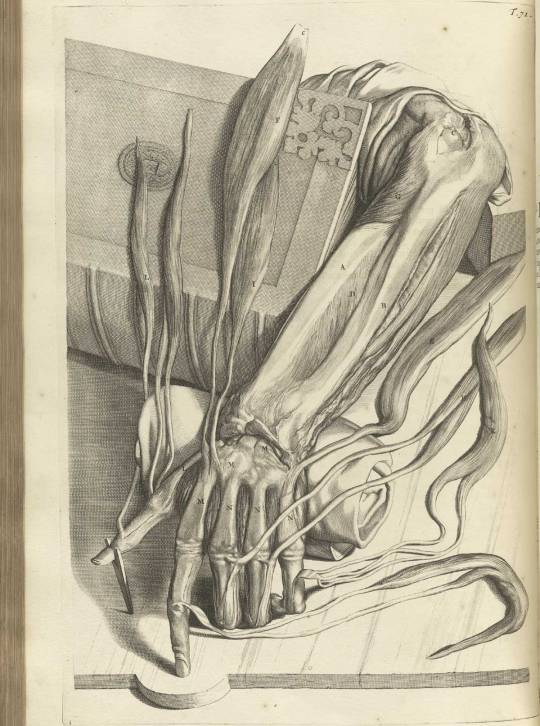
Govard Bidloo, Ontleding Des Menschelyken Lichaams, Amsterdam, 1690.
#medicine#medical illustraton#anatomy#anatomy illustration#anatomical illustration#medical humanities#medical history#Govard bidloo#govert bidloo#medical diagram#dissection#human dissection#anatomical diagram#medical art#history of medicine
64 notes
·
View notes
Photo







#Ashworth
#Govard Bidloo#Gerard de Lairesse#anatomical illustration#scientific illustration#anatomy#histsci#histSTM#17th century#history of science#Ashworth#Scientist of the Day
54 notes
·
View notes
Photo

Ontleding des Menschelyken Lichaams - Govard Bidloo, Gérard de Lairesse, Abraham Blooteling, Peter van Gunst
#engraving#anatomy#dissection#human#body#govard bidloo#gerard de lairesse#Abraham Blooteling#peter van gust#skull
358 notes
·
View notes
Text










gangrene / Ontleding Des Menschelyken Lichaams by Govard Bidloo
#spilled ink#body horror#this body as an act of war#this body as a graveyard#poetry#my writing#to evoke#tcp#the house as a body#this haunting is anatomical
190 notes
·
View notes
Text

Govard Bidloo (March 12, 1649 - March 30, 1713) was a Dutch Golden Age physician, anatomist, opera librettist, poet and playwright.
In 1685 he published an anatomical atlas, Anatomia Hvmani Corporis. It described papillary ridges on skin (fingerprints) and was one of the pioneering scientific observations which laid the foundation of forensic identification using fingerprints.
The atlas was illustrated with 105 plates by Gerard de Lairesse, showing the human figure both in living attitudes and as dissected cadavers. He wrote the libretto for the first-ever Dutch opera, Ceres, Venus en Bacchus (1686) by Johan Schenck.
6 notes
·
View notes
Text


Ontleding des menschelyken lichaams
Uniform Title(s): Anatomia humani corporis Author(s): Bidloo, Govard, 1649-1713
source: (X)
2 notes
·
View notes
Photo



Happy Friday! We’re sending you into the weekend with these engravings from Gerard de Lairesse’s Groot Schilderboek (Great Book of Painting). De Lairesse was one of the most popular painters of the Dutch Golden Age, and he created several interior paintings for the houses of the nobility. Those of us with an interest in medical history, however, probably know him best as the artist who collaborated with anatomist Govard Bidloo on Bidloo’s beautiful 17th century anatomical atlas (pictures of that can be found here). This atlas is often regarded as signifying a stylistic shift from the more idealized Italian style to something more realistic.
When it came to his own paintings, however, de Lairesse thought the best subjects were grand scenes rooted in history and mythology. These examples from the Schilderboek certainly demonstrate that philosophy.
34 notes
·
View notes
Photo

Govard Bidloo and Gerard de Laireese : "Fetal Skeleton (Table 101)" (Anatomia humani corporis, 1685)
Prints available on etsy!
53 notes
·
View notes
Text









Govert Bidloo or Govard Bidloo (12 March 1649 – 30 March 1713) was a Dutch Golden Age physician, anatomist, poet and playwright. He was the personal physician of William III of Orange-Nassau, Dutch stadholder and King of England, Scotland and Ireland.
Bidloo was also a prolific and popular poet, opera librettist, and playwright. He wrote the libretto for the first-ever Dutch opera, Ceres, Venus en Bacchus (1686) by Johan Schenck. His collected works were published in three volumes after his death.
One of Bidloo's students was his nephew Nicolaas Bidloo, who would go on to become the personal physician of Russian czar Peter the Great, and also founded a medical school in Moscow.

Soundtrack
40 notes
·
View notes
Photo

Anatomia humani corporis by Govard Bidloo, circa 1685
#medicine#anatomy#medical illustration#anatomy illustration#human anatomy#anatomy diagram#medical diagram#cardiovascular system#Cardiology#human heart#heart dissection#dissection#dissected heart#anatomy and physiology#medical humanities#govard bidloo
158 notes
·
View notes
Photo

Portrait of Govard Bidloo © Gérard de Lairesse, 1690
211 notes
·
View notes